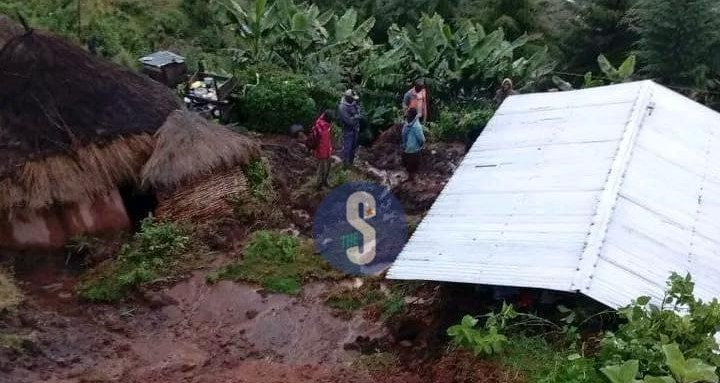
At least ten people have been confirmed dead following a devastating mudslide in Elgeyo Marakwet County after days of heavy rainfall.
Villages were buried under mud and debris as floodwaters tore through farmlands and homes, cutting off key roads and forcing hundreds to flee to higher ground.
The Kenya Red Cross said rescue operations were underway, describing the situation as severe, with widespread destruction and loss of life.
“A landslide following heavy overnight rains has hit Moror Village and Chesongoch Center, Elgeyo Marakwet County, leaving many people injured. Our response team has been activated to respond, assess the situation, and support those affected,” the organisation posted.
This tragic event, dated November 1, 2025, has reignited questions about what mudslides are, why they occur, and how they differ from other related disasters, such as landslides, which are often used interchangeably but are not the same.
According to data from the United Nations Statistics Division, a landslide is defined as any kind of moderate to rapid soil or rock movement, including lahars, mudslides, and debris flows.
A mudslide, sometimes called a mudflow, on the other hand, is considered a specific type of landslide characterised by the rapid downhill movement of a mass of rock, earth, and debris that is highly saturated with water, often occurring after heavy rainfall.
This means that while all mudslides are technically landslides, not all landslides are mudslides.
Mudslides are unique because they occur when intense rainfall or flooding oversaturates the ground, causing a fluid-like flow of mud, rocks, and debris.
“Landslides are more widespread than any other geological event and can occur anywhere in the world,” reports the World Health Organization.
These flows can move with remarkable speed, often reaching up to 50 kilometers per hour, and in extreme cases, accelerating to hundreds of kilometers per hour.
A striking example is the 1970 Huascarán landslide in Peru, recognised by the Guinness World Records as the world’s deadliest single landslide.
The disaster involved a massive surge of rock, mud, ice, and water that swept down the mountain at an estimated 180 to 300 kilometers per hour, burying entire towns and claiming thousands of lives.
This makes them particularly dangerous to people and property in their path.
The Kenya Meteorological Department (KMD) has previously issued advisory notices over prolonged rainfall, which weakens the soil’s stability, especially on steep slopes and hilly terrain such as that found in Elgeyo Marakwet, West Pokot, and Murang’a.
Once the soil can no longer hold its structure, gravity takes over, triggering a downhill surge of mud and debris.
The National Disaster Management Unit (NDMU) adds that deforestation and poor land use practices, such as farming on steep slopes without proper terracing, make these regions more vulnerable.
Climate change is also intensifying rainfall patterns, further increasing the frequency and magnitude of these disasters.
In the Elgeyo Marakwet tragedy, local authorities say the mudslide followed several days of heavy rainfall, which loosened the soil on surrounding hills.
The World Health Organization (WHO) has in the past warned that disasters of this nature not only cause direct fatalities but also increase the risk of waterborne diseases such as cholera, given the contamination of water sources.
Historically, Kenya has faced recurring mudslides and landslides, especially in its highland regions.
One of the most notable incidents occurred in West Pokot County in 2019, when heavy rains triggered massive landslides that killed over 50 people and displaced hundreds.
In May 2020, another mudslide struck the Chesogon area along the Elgeyo Marakwet–West Pokot border, claiming dozens of lives.
The Kenya Red Cross and NDMU documented that hundreds of households were affected, with roads, bridges, and farmlands destroyed.
The repeated nature of these disasters underscores Kenya’s vulnerability, particularly in areas with steep terrain and heavy rainfall.
Globally, mudslides and landslides cause significant loss of life and property each year.
“Between 1998 and 2017, landslides affected an estimated 4.8 million people and caused more than 18,000 deaths. Climate change and rising temperatures are expected to trigger more landslides,” a WHO report states.
The International Consortium on Landslides (ICL) classifies mudslides as among the most destructive forms of mass movement because of their speed and unpredictability.
In developing countries, where early warning systems and land-use planning are often limited, the risks are especially high.
In Kenya, agencies such as the Kenya Meteorological Department, the Ministry of Environment, and the National Disaster Management Unit have been collaborating to develop early-warning systems for rainfall-induced hazards.
The KMD issues alerts when rainfall exceeds thresholds likely to cause flooding or landslides, while the Kenya Red Cross mobilises local response teams and relief operations.
The World Meteorological Organization (WMO) has supported regional efforts in East Africa to improve weather monitoring and data sharing, noting that accurate forecasts are essential in saving lives before such disasters strike.
The human and economic toll of mudslides extends far beyond immediate loss. Survivors are often left without homes, livelihoods, or access to clean water and sanitation.
Prevention and preparedness are key to reducing future mudslide disasters.
Reforestation of degraded hillsides, enforcing building codes, and restricting settlement in high-risk zones are among the measures recommended by the National Environment Management Authority (NEMA) and the UN Environment Programme (UNEP).
Communities are also being trained to recognise early warning signs, such as cracks appearing on slopes, water seepage, or unusual sounds coming from the ground.
The Kenya Red Cross runs occasional public awareness campaigns in vulnerable counties during the rainy seasons to encourage early evacuation and safer settlement practices.
While mudslides and landslides share similar origins in gravity and unstable terrain, their distinction lies in the degree of water involved and the resulting behaviour of the moving material.
A landslide may consist of dry rock or soil sliding gradually, but a mudslide behaves more like a river of liquid earth, capable of sweeping away homes, bridges, and even vehicles within seconds.
Understanding this difference is essential in developing accurate early-warning systems and targeted disaster response strategies.
The recent Elgeyo Marakwet tragedy is a sobering reminder of the growing threat posed by extreme weather in Kenya.
With climate patterns becoming increasingly erratic, warnings suffice that such disasters could become more frequent and severe.
As the government and humanitarian agencies race to aid survivors, the focus must shift from reaction to prevention—investing in stronger early-warning systems, better land management, and community preparedness.












